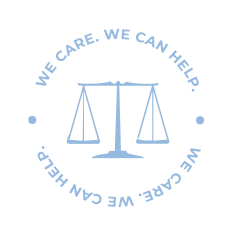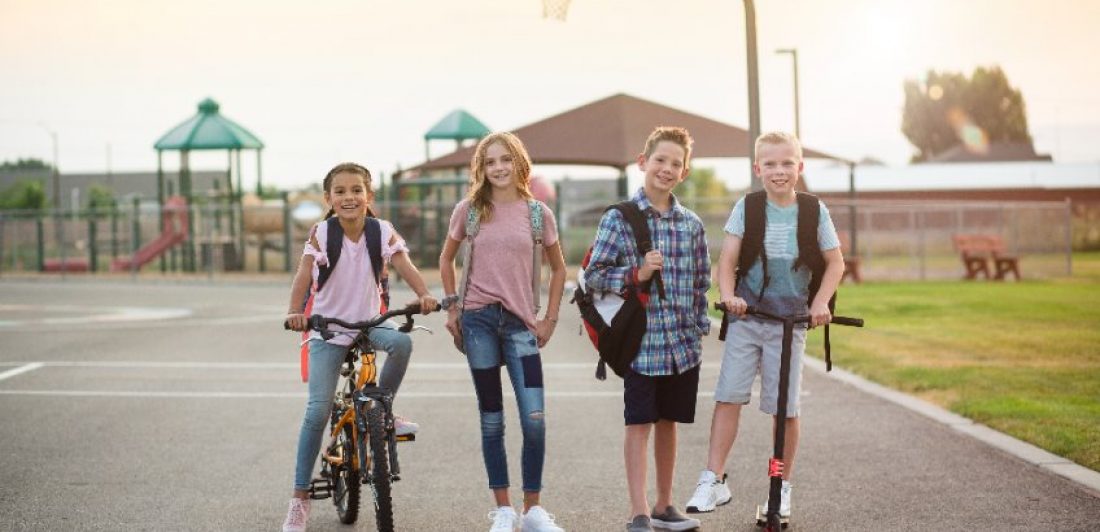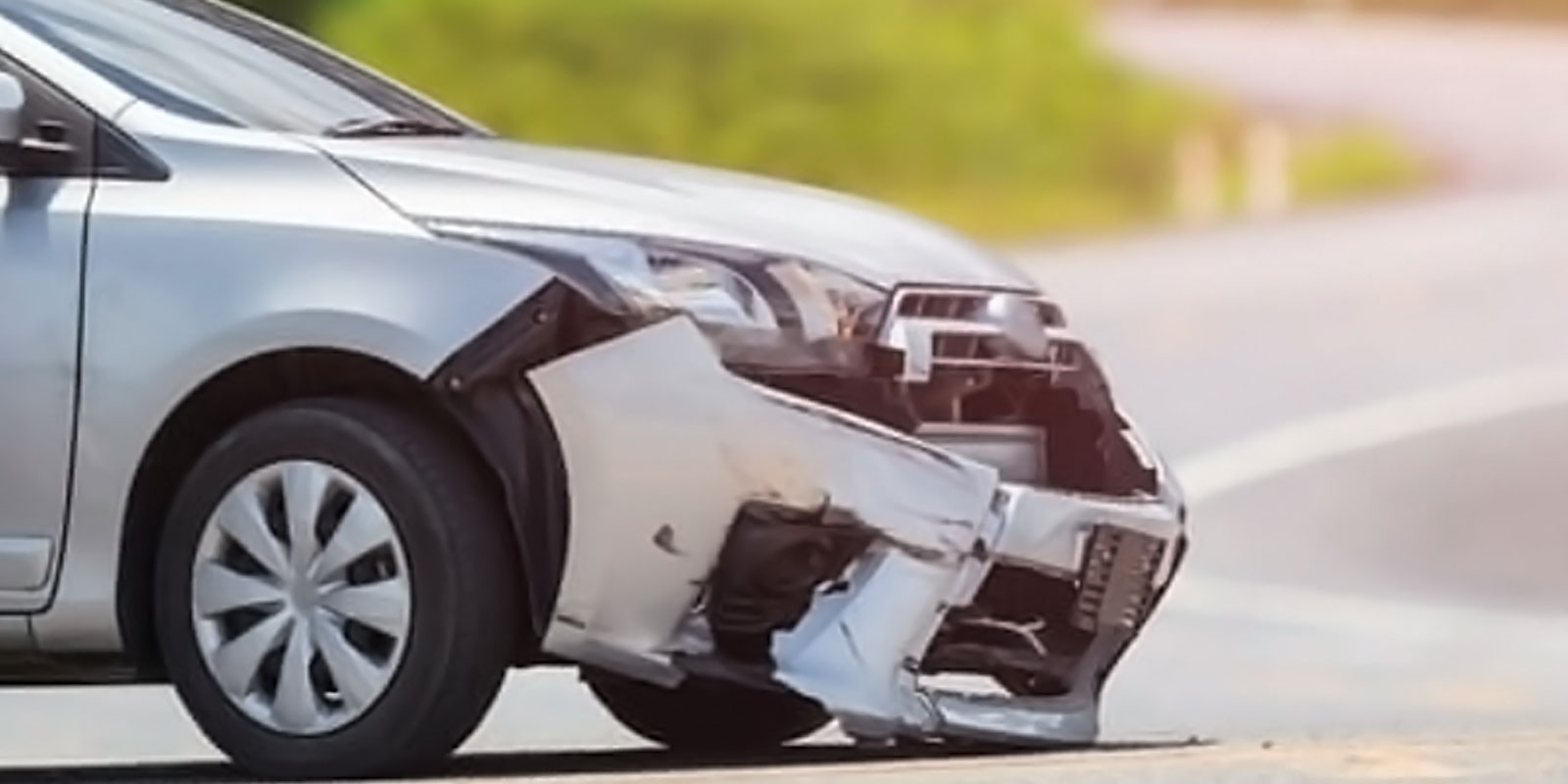Getting to school safely is only one of parents’ concerns about starting the new school year. Many things can factor into how a child gets to school, such as whether the school bus can pick them up, how far they live from the school, and if parents can drop them off and pick them up. Although most kids get to school by car or bus, some choose to walk or ride a bike. Walking or biking is an excellent way to get to and from school when all the proper safety measures are taken.
Are My Kids Ready to Travel to School On Their Own?
The first question a parent should ask when deciding if their child should walk or bike to school is if their child is ready for that responsibility. Though all kids mature at different rates, experts suggest that most kids aren’t ready to walk or ride independently until they are about ten years old. Age can be an important factor in this decision, as young children are often easily distracted, and they may not be mature enough to fully understand the rules of the road.
Before your child can walk or bike to school on their own, they need to fully understand safety rules for both pedestrians and traffic on the road. In addition, they should also have a good understanding of the risks involved with walking and biking to school. To keep your children safe, ensure they are mature enough to take safety seriously before letting them go to school independently.
How Do I Prepare My Kids to Go to School By Themselves?
The best way to prepare your kids to walk or bike to school by themselves is to practice walking and biking with them. While you walk or ride, be sure to explain what safety precautions you take and why you take them. Many children learn best by watching, and seeing their guardian model the correct behavior will help them learn how to stay safe.
In addition, you can help them learn how to be better prepared at home. For example, you can quiz your child with flash cards of traffic signs to make sure they understand what each sign means. You may also consider downloading this free workbook from NHTSA and working through it with your child. Additionally, there are plenty of instructional videos that you can watch together. Making sure your child understands how to be safe when walking or biking is the first step to getting to school safely.
Getting to School Safely: Biking
Riding a bike can be a quick, effective way of getting to school safely. However, if safety measures aren’t taken seriously, bike riders can be seriously injured or even killed. NHTSA reports that bicyclist deaths are highest during the months of June–September and that almost 75% of bicycle deaths happen in urban areas. The most common causes of fatal bike crashes are 1) failing to yield the right of way and 2) bicycles not being visible to drivers.
Note: Although these rules are addressed to bike riders, they also apply to those who ride skateboards, scooters, or other forms of transportation.
Preparing to Ride Safely
Riding a bike safely actually starts before your feet ever touch the pedals. Taking the proper safety measures before riding will help ensure your child gets to school safely.
1. Wear a Correctly-Fitting Helmet
A good bike helmet is absolutely necessary for your child’s safety when they ride their bike. Even though they may not want to wear it, a helmet will be crucial in protecting their head if they fall off the bike or run into an object. When you purchase a bike helmet, make sure that it fits correctly and has a chin strap.
2. Do Regular Bike Maintenance
Like cars, bikes require maintenance. Be sure to inspect your bike before every ride. It may be helpful to remember your ABC’s.
- A is for Air: check to ensure that the tires have enough air.
- B is for Brakes: squeeze both the front and rear brake levers to be sure they work properly.
- C is for Chain: look at the chain and gears to see if they are working correctly.
3. Plan Your Route Ahead of Time
Planning the route to school ahead of time is very important, as your child needs to know the safest way to get to their destination without getting lost. When planning the route, try to avoid busy streets, and look for bike paths or bike lanes. Also, it may be helpful to remember that the safest route to school may not be the most direct.
4. Put Electronics Away
When riding a bike, especially on the road with lots of cars, it is absolutely essential that all distractions be minimized. Phones, tablets, or any other electronic devices should be put away in a pocket or a backpack. Headphones should also not be worn, as hearing is essential to having awareness of your surroundings. The temptation to quickly check a text or skip a song can take attention away at just the wrong time. Bike riders must remain totally aware of their surroundings at all times to be as safe as possible.
How to Ride Safely
Once you and your child have taken all the steps to prepare for a safe bike ride, you’re ready to go! Next, you’ll want to make sure your child knows all of these tips for their ride to school.
1. Ride in the Same Direction as Traffic
Bikes are like vehicles; they belong on the road. Even though bikes are much smaller than cars, bike riders are supposed to follow the same traffic rules. Make sure that your child rides on the right side of the road in the same direction as traffic.
2. Ride Predictably
In the same way that you should drive a car in a predictable way, your child should ride a bike in a way that people will be able to predict their next move. Teach them how to use proper turn signals with their hands, and make sure they can ride at a steady pace in a straight line. Additionally, remind them not to swerve unexpectedly, as this can increase the chances of a bike crash.
3. Follow Traffic Signs and Signals
Again, bike riders must follow the same traffic rules as cars. This includes obeying road signs, lane markings, and traffic signals. Make sure your child knows what all of the signs mean and how they should react to them before they ride alone.
4. Stay in the Bike Lane
Be sure your child knows what a bike lane is and that they ride in it as much as possible. Not all roads will have bike lanes, and that’s okay. Just make sure that your child knows to ride as far to the right as possible so they don’t hold up traffic or get too close to cars.
5. Never Use Electronics While Riding
As stated earlier, it’s very important to keep electronics put away while riding a bike. Kids must devote 100% of their attention to riding, especially around other vehicles. Keep phones, tablets, and other electronic devices put away in a pocket or backpack.
6. Look Ahead for Hazards
As much as we wish all roads were totally flat, they aren’t. Your child needs to constantly scan the road for objects that could get in their way, like rocks, potholes, toys, bumps, etc. If they see the hazard in enough time, they can calmly maneuver around it instead of swerving unexpectedly or falling off the bike.
7. Avoid Riding on the Sidewalk
Sidewalks, though clear of dangerous traffic, are for pedestrians first, not bikes, skateboards, scooters, etc. Make sure your child knows to ride on the road, not the sidewalk. This will protect both the bike rider and the walker. Another reason it’s safer to ride a bike on the road is that sidewalks sometimes end unexpectedly and may force bike riders onto the road when car drivers don’t expect it.
Getting to School Safely: Walking
If you live close to your child’s school, walking is a great way of getting to school safely. However, safety precautions should still be taken, no matter how short the distance. According to the American Academy of Pediatrics, about 900 pedestrians 19 years and younger are killed every year. Schools install many safety measures, such as crossing guards, crosswalks, and school zones to ensure that both drivers and pedestrians are extra cautious on the road, but there are more ways your child can stay safe while walking to and from school.
Preparing to Walk Safely
Preparation is key to doing anything safely, and walking is no exception. Here are some things you should do before letting your child walk to school.
1. Plan the Safest Route Beforehand
In the same way you might plan the safest route for riding a bike, plan the safest route for walking. Avoid overly busy roads, even if that means walking a little farther. It’s better to be safe than take the fastest, most direct route. Additionally, make sure your child knows the exact route so they don’t get lost.
2. Put Electronics Away
Just like riding a bike or driving a car, people walking near traffic should be totally focused and aware of their surroundings. Before your child walks to and from school, have them put their phone or any other electronics away in a backpack or pocket. If they absolutely must use their phone, teach them to stop walking and stand far away from the road.
3. Don’t Walk Alone
Although this can’t always be controlled, it’s best to walk in groups of at least two. If you can, try to set up groups that can walk to and from school together so no one has to walk alone. This will help protect the kids from dangerous strangers, as well as make them easier for drivers to see.
How to Walk Safely
Now that you and your child have the proper knowledge to walk to and from school, they’re ready to put more safety tips into practice.
1. Know How to Look and Listen
There may be a time when your child needs to go into a street, whether they are crossing the road or chasing an object like a ball. It’s imperative that they know how to look and listen for cars before going out into the street for any reason. This knowledge will help them stay safe as they walk to and from school in potentially busy traffic.
2. Safely Cross the Street
Crossing the street is one of the most dangerous parts of walking near traffic. Make sure that your child knows to only cross the street at intersections or crosswalks, where drivers will be extra cautious or even already at a stop. In addition, be sure to teach your child to always look both ways before crossing the street in a left-right-left pattern.
3. Walk on Sidewalks
As mentioned earlier, sidewalks are for pedestrians first. They are the safest place for kids to walk because that’s where drivers expect them to be. However, some roads may not have sidewalks. If there are no sidewalks, your kids should walk facing traffic, on the left side of the road, as far from the road as possible.
4. Watch for Cars in Driveways and Parking Lots
Of course, your kids should be watchful of cars when crossing the street and while walking along the sidewalk. However, they should also be mindful of driveways and parking lots. Cars will likely be pulling in or out of these areas and may not expect pedestrians to be in the way.
5. No Horseplay
Kids will be kids. They love to play, even when walking to and from school. Nevertheless, they must refrain from pushing, playing, or shoving others when walking around traffic. The risk of someone being pushed into the road is too great to mess around near moving cars.
6. Expect that Cars Don’t See You
This is more of a mindset that should affect all of your child’s actions as they walk. Assuming that cars don’t see them will make them more cautious. With this mindset, they should never walk in the road until the driver acknowledges them with eye contact, a nod, or a wave.
The Carlson Law Firm Can Help
Even if you teach your kids every safety rule in the book, people may still be negligent sometimes. If your child is injured by someone else’s poor actions, you should contact a caring and compassionate personal injury attorney. Our attorneys have the knowledge and experience to get you the justice you deserve. We care, and we can help.





